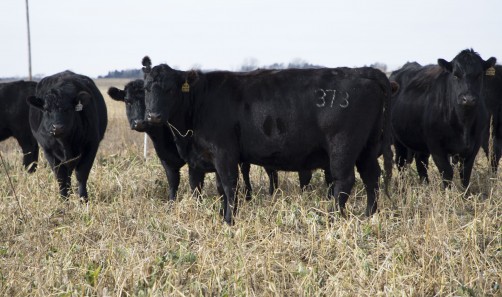Improve soil health with cover crops
Four-year study to give producers decision-making data about use of cover crops planted after harvest for grazing can affect soil health.
December 20, 2017

While many producers are open to innovative ideas that can improve soil health, they need more evidence before adding cover crops to their rotation plans, according to South Dakota State University (SDSU) assistant professor Sandeep Kumar in the department of agronomy, horticulture and plant science.
Kumar is one of 26 scientists working on a U.S. Department of Agriculture project to determine how cover crops — such as oats, sorghum, turnips, radishes and millet — can affect soil health when planted after harvest for grazing.
Post-doctoral research associate Bishal Kasu, who surveyed producers, said, “If agricultural producers perceive the approach can contribute to the long-term farm profitability, then farmers are on board.”
Researchers from four other universities — North Dakota State University, the University of Wisconsin-Madison, the University of Nebraska-Lincoln and the South Dakota School of Mines & Technology — along with USDA offices in Lincoln, Neb.; Mandan, N.D., and Brookings, S.D., are involved in the four-year National Institute of Food & Agriculture project.
The researchers are assessing the effects of incorporating grazing crops at seven sites in North Dakota, Nebraska and South Dakota. They are gathering data on soils, crop and livestock performance and environmental parameters such as greenhouse gas emissions.
“The crops and grazing treatments are different in each state because of the variability in precipitation,” SDSU project leader Kumar noted. In South Dakota, the researchers are using cover crops in a three-year rotation, right after small grains, which are harvested in June and July.
At the Southeast Research Center near Beresford, S.D., for example, the researchers are evaluating three treatments: corn/soybeans/oats, corn/soybeans/oats/cover crop and corn/soybeans/oats/cover crop with grazing. Associate professor Peter Sexton, co-investigator of the funded project, oversees this part of the research.
Preliminary data from the first year of grazing showed no negative impacts to soil health, according to Kumar. A detailed analysis of last year’s results as well as those from this fall will give producers data regarding cover crops.
“Cover crops can add nutrients and organic matter to the soil,” he said. Legumes provide nitrogen, and tubers such as radishes and turnips create pores as the roots decay that allow the water/rainfall to penetrate deeper into the soil. This can also help reduce runoff into lakes and streams.
“The goal is greater sustainability,�” Kumar noted.
You May Also Like


.png?width=300&auto=webp&quality=80&disable=upscale)
